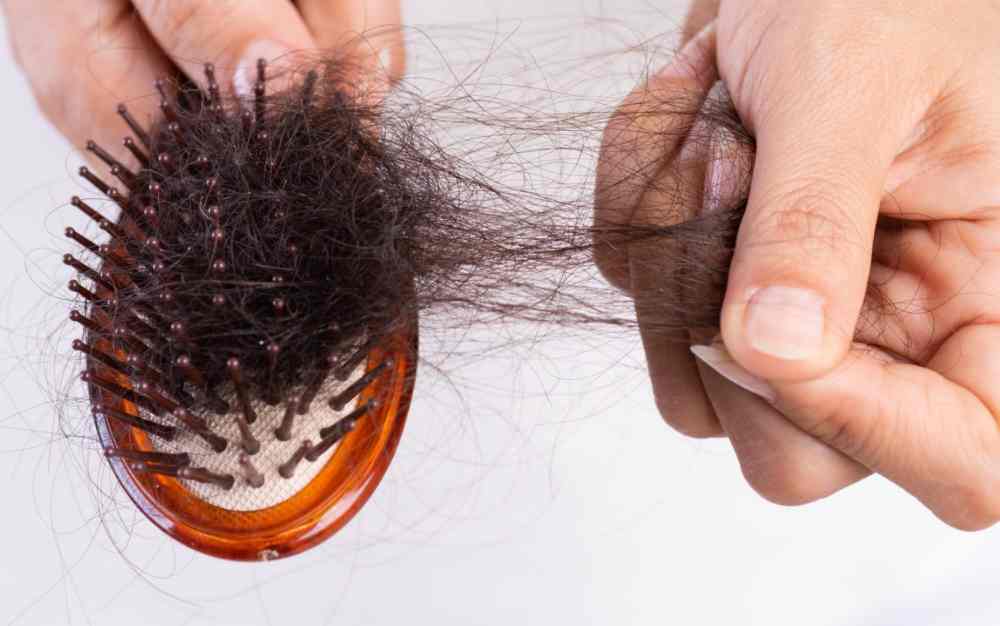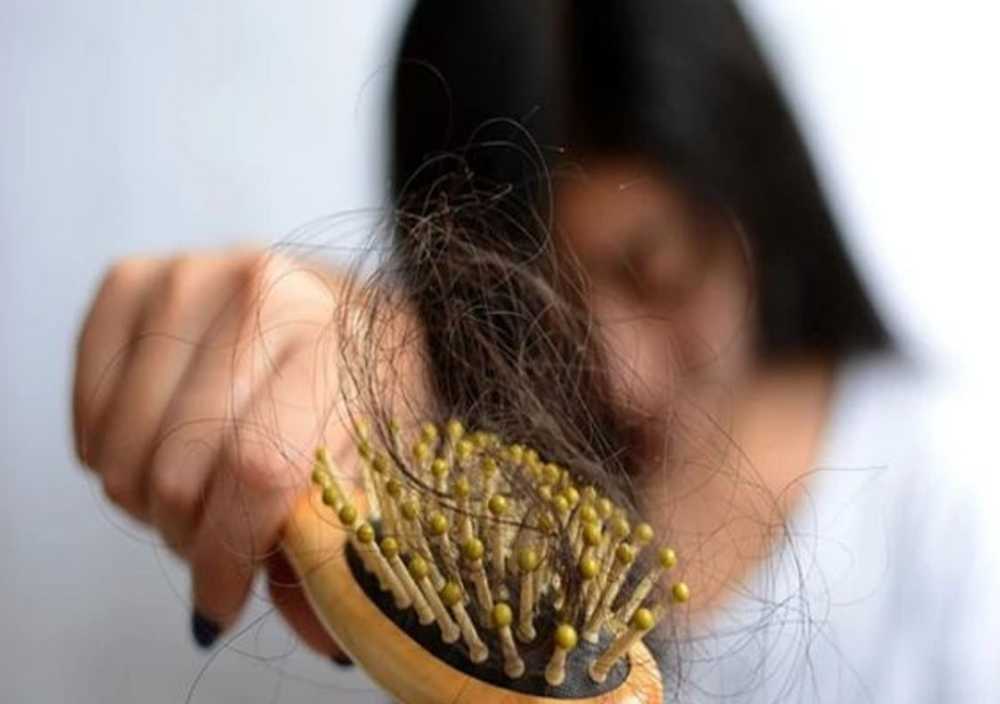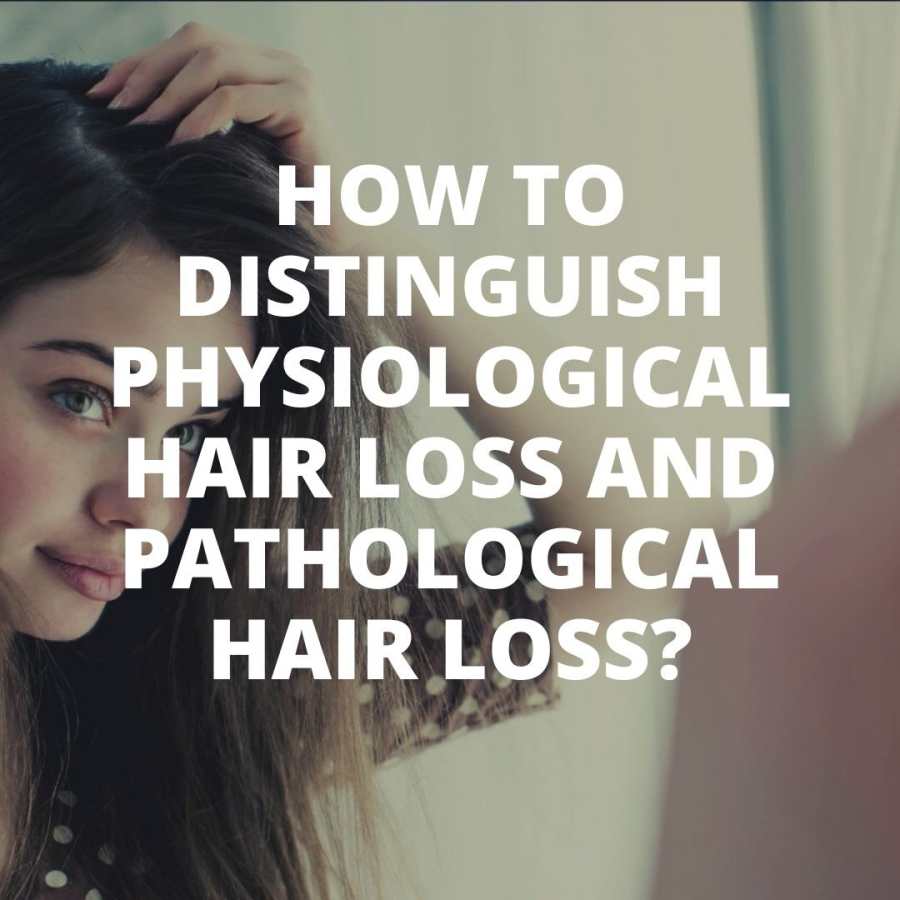Distinguishing physiological and pathological hair loss helps you to have timely and proper care and treatment. Don’t miss the following article.
Hair loss is a phenomenon that everyone has encountered. It is usually caused by two main causes: normal physiology of the body or pathology. Very few people can distinguish these two causes.
There are people who worry too much when their hair falls out due to physiological reasons, when the hair falls out due to some medical reason, they do not pay attention to make the disease more serious. Therefore, distinguishing hair loss caused by any cause is very important in life. So, everyone, please refer to the article below to know how to distinguish these two causes.
What is physiological hair loss?

Physiological hair loss is the phenomenon of hair loss according to the life cycle: first the hair sprout will be formed, then grow and then grow, it will lengthen over time, then gradually age and weaken and finally fall out. Hair after falling out will immediately have a new layer of hair formed to replace the old hair layer.
According to statistics, every day, a hair will grow about 0.35mm, and about 1cm/1 month. For the average person, the average number of hairs lost each day will range from 30 to 100 strands, and about the same amount of hair will grow. It has been shown that the number of hairs that fall out each day will correspond to the number of hairs that grow to replace it. So, there is nothing to worry about if you see that today you have lost a few dozen hairs, because there are already other hairs growing to replace that number.
A hair has a life cycle that lasts from 2 to 6 years (the life cycle of female hair will be longer than that of men). According to statistical calculations, at a time, on the hair of a healthy person will have up to 85% to 95% of the hair in the anagen phase (growth phase), 1% to 2% in the catagen phase (the stop phase) and 5% to 10% of hair is in the telogen phase (resting phase, waiting for shedding). Because the process of hair loss and hair growth takes place at the same time, the amount of hair is almost unchanged under normal physiological circumstances.
What is hair loss due to disease?

Pathological hair loss starts from the weakening of hair germ cells, due to causes such as stress, fatigue, unbalanced nutrition, neuroendocrine disorders (there are differences in both sexes), hormone changes, protein deficiency, scalp fungus, hypothyroidism, etc. When the germ cells are weakened, the hair cannot grow and function normally, leading to hair loss, thinning hair more and grow slowly.
Besides, diseases such as dengue fever, viral fever, bronchitis, pneumonia for a long time are also one of the causes of hair loss.
However, these causes do not cause hair loss immediately, but occur 1-2 months after the infection.
In addition, when suffering from serious diseases such as cancer requiring radiation therapy, or lupus erythematosus, syphilis, … are also the main causes of hair loss. Whether hair loss is due to any medical cause, it needs to be detected and treated early to ensure health.
If people feel unusually heavy hair loss, they must monitor whether they are falling into one of the above pathological cases, and must be combined with daily hair monitoring such as:
- Hair loss is not due to physiological causes, unexplained and continuous loss for a long time (more than 100 hairs per day). The most recognizable sign is when washing or combing the hair, the amount of hair loss will be pinched one by one. Or when you put your hand through it, your hair will fall out a lot and get caught between your fingers.
- Hair loss a lot but no hair regrowth: People will have the feeling that the hair will not grow back no matter how much or little it falls out, the most obvious evidence is that when touching the hair, people will feel that the hair is getting thinner and thinner, the amount is also less.
- In particular, when looking at the scalp, you will see very little hair, even very thin hair, and large patches of scalp can be seen.
- Hair falls out in patches: Hair is difficult to regrow and often falls out in the same place. If you experience many of these conditions on a regular basis, your scalp will be white, exposed where no hair grows.
- Baby hair grows little, sparse and slow, sometimes thin and curly. This shows that you are not able to nourish healthy hair because your body lacks nutrients. To overcome this situation, you should consult a doctor to know what nutrients to add to your hair.
- Hair loss is accompanied by some symptoms such as itching, rash or peeling. This could be caused by a fungal infection of the scalp. We need to go to a dermatologist immediately to prevent and stop this situation early.
Above is how to distinguish physiological and pathological hair loss, and their effects in daily life. Hopefully through this article can help everyone in the process of taking care of their own healthy hair.
More Articles:
Coconut oil for hair: How long can you leave coconut oil in your hair
The truth about sleep – Is it necessary to sleep early and get enough 8 hours a day?












